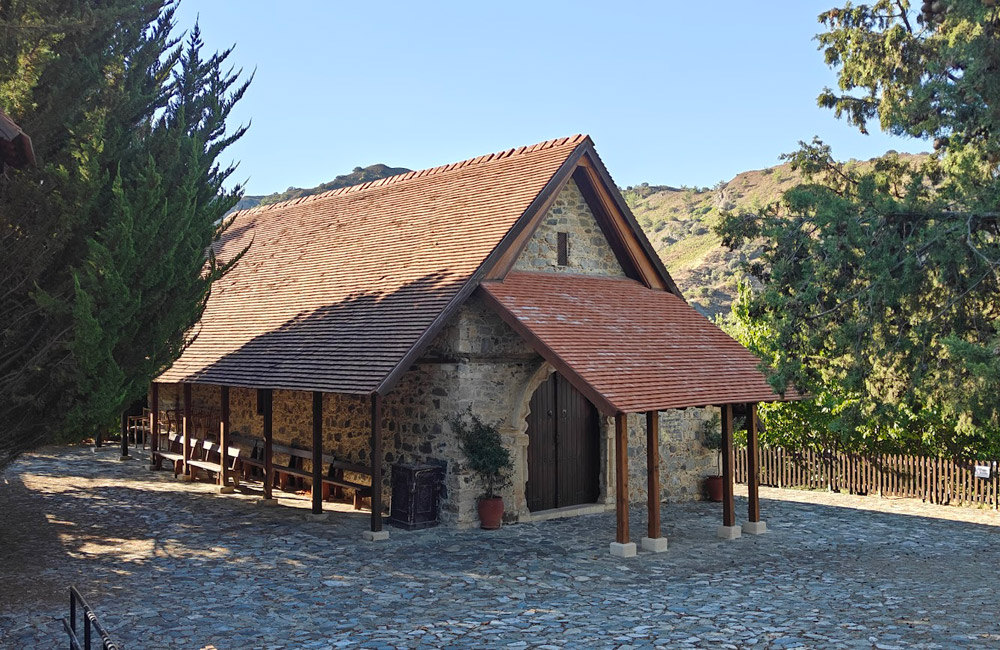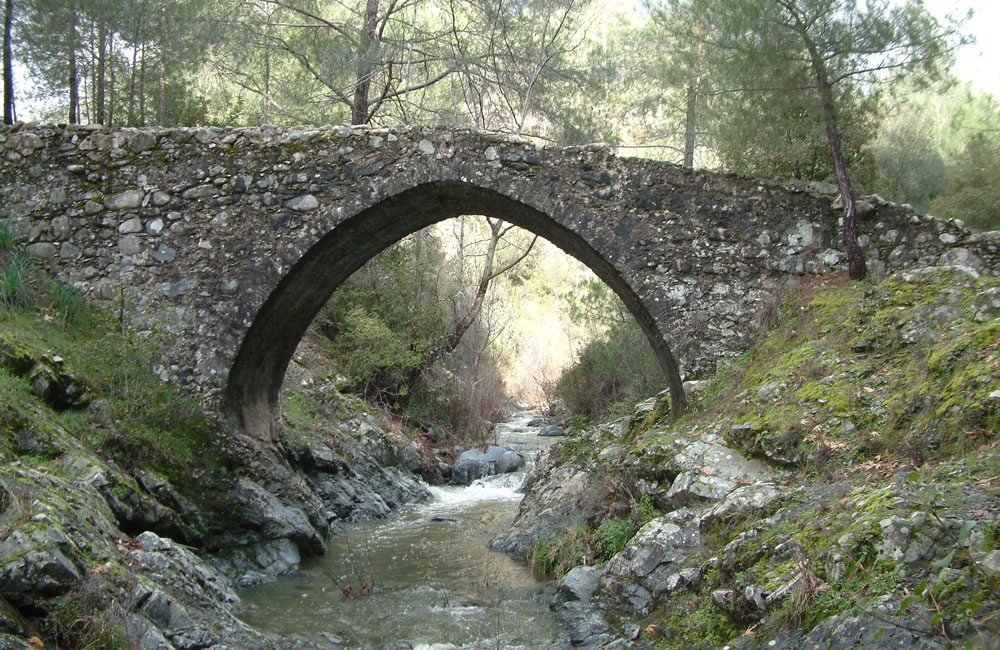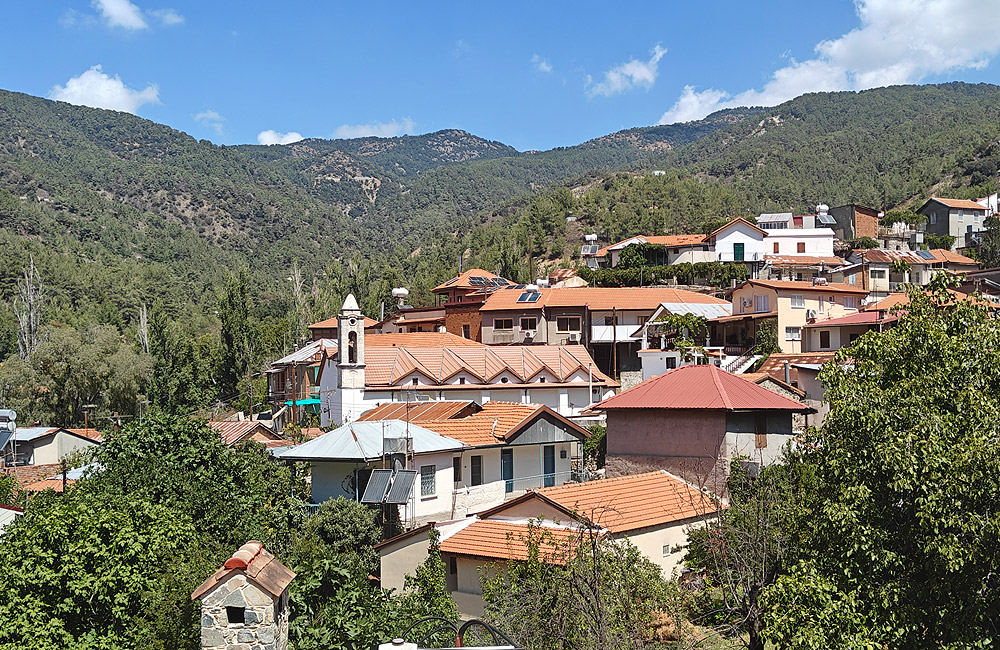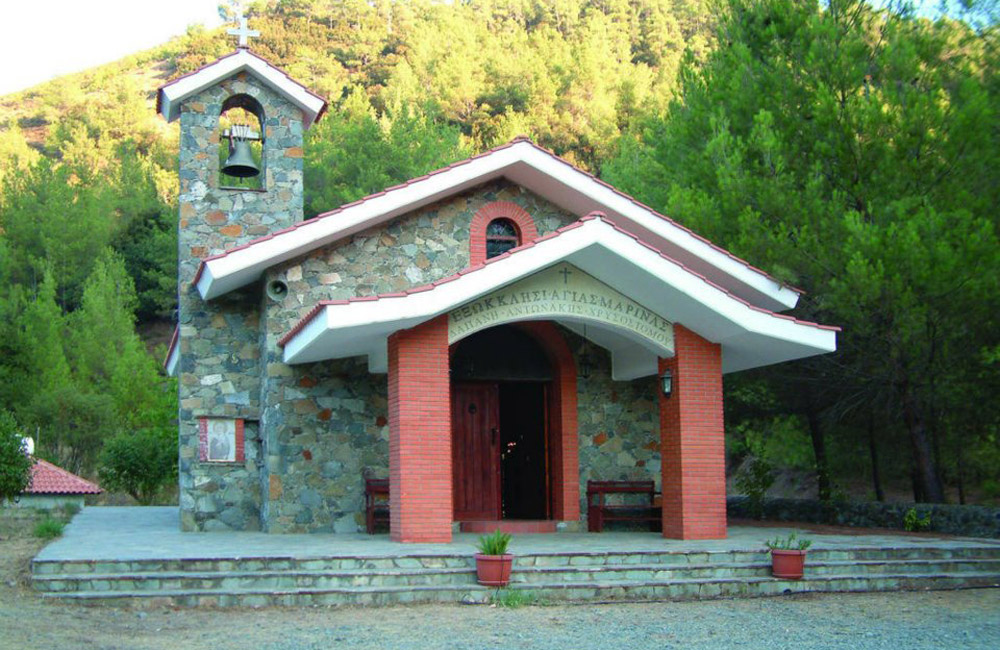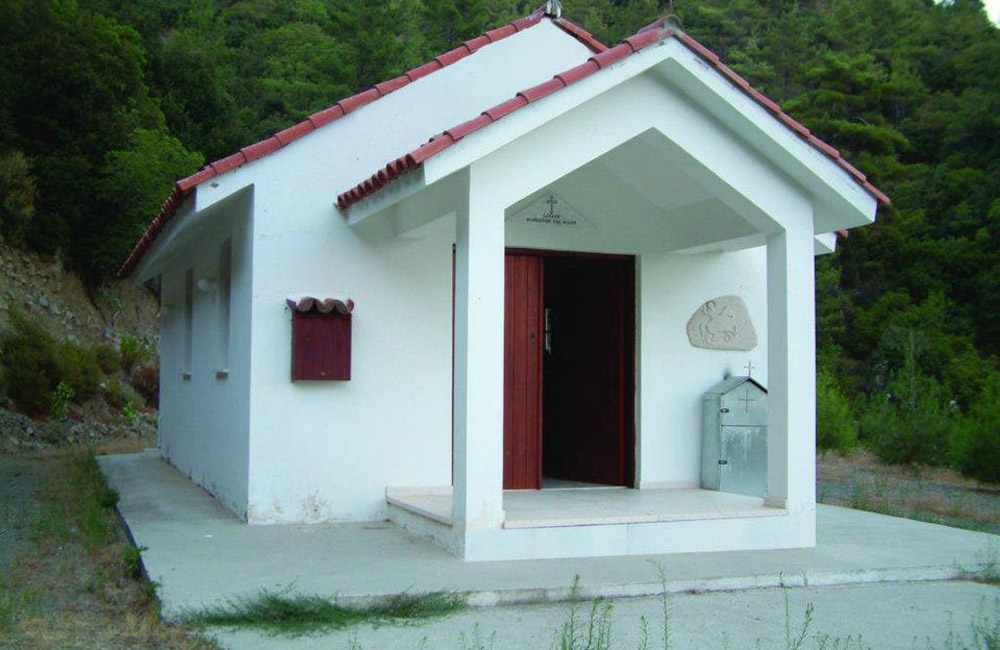Ayioi Anargyroi Monastery
About two kilometres from Phini, on the road leading to "Agios Dimitrios", there is the monastery of "Agioi Anargyroi" (plural, meaning the Saints that show no regard for / have no money); only its church, which has two aisles and a wooden roof, is still extant. Initially, as its architectural structure reveals, it only had one aisle, however, the south wall was demolished and the church took its present form during the 18th century.
Built at an altitude of about 920 meters, in a region that stands out for the wildness of the landscape and the thick vegetation, the "Agioi Anargyroi" monastery meets all the demands of the monks that seek peace, meditation, and prayer. Dedicated to the Saints Kosmas and Damianos, it enjoyed a great reputation since many were those that sought free-of-charge healing by the Saints, who showed no regard for money. Furthermore, the chant that the people used in order to petition the Saints is well known: « Anargyroi Saints and miraclemakers, take care of our ailments, you have been granted a free Gift, freely grant to us too ». Especially though, those who had kids came to it so as to evoke the Saint's protection from the many diseases that plagued our island during previous times.
The first testimony that we have, regarding the "Agioi Anargyroi" monastery, comes from a note in code 581 of the National Library of Paris, informing us that, during the 17th century, it was united with the renowned monastery of "Panagia Trooditissa". It is generally believed that the monastery was in existence since the Frank domination era (1191 -- 1571) and, perhaps, even established during the Byzantine years, when the great monasteries of Kykkos and Trooditissa were created. We receive important information about it by the Russian monk Basil Barsky (1701 -- 1747), who had visited it in 1735 and had a conversation with its prior and three or four monks that lived in a stone-made cell, next to the church. They all supported themselves through agriculture, the breeding of silkworms, and the shepherding of a few goats. In his itinerary, he also notes that there was a threshing floor outside the monastery that was used by the monks, just like the nearby mill. However, the most important information that he reports is that the monasteries of Trooditissa and St. Philip were dependencies of the "Agioi Anargyroi" monastery. The monastery of St. Philip, only its church being extant today, is located three kilometres west of the village of Omodos and in it was kept the skull of the Saint. After it was finally abandoned, the Holy Relic was transferred to the monastery of the Holy Cross in Omodos, where it still is until today.

The monastery is also mentioned by the Archimandrite (Dean) Kyprianos in his book regarding the history of Cyprus, which was published in Venice in 1788. It is noted that it came under the jurisdiction of the Holy See of Pafos -to which it still belongs today. Another reference from the same era regarding it is that the Metropolitan Bishop of Pafos, Chariton (1827 - 1854), ordained in it the monk Charitona from Trooditissa, on the 15th of August 1828, as a deacon. However, it seems that the monastery had started to fall into decline. A certain Paisios from Nicosia is mentioned as its last monk, living there until 1850. Paisios was for a long period of time a teacher for the young pupils in Phini, who had to travel back and forth to the monastery. It was then abandoned and, as the time passed, its buildings collapsed into ruins.
 |
 |
 |
| Στιγμιότυπα από τις εργασίες αναστήλωσης του Μοναστηριού των Αγίων Αναργύρων. | ||
There also are two traditional stories regarding the church of "Agioi Anargyroi", recorded in the beginning of our century. According to the first, during older times people saw a young man riding a horse, coming out of the church every Saturday evening. The inhabitants believed that he was one of the "Anargyroi" Saints, heading out to heal those who needed his help and could not come to the monastery. The second one reports that some priest, wearing vests of a previous era, used to incense outside the church in the mornings. This priest was accidentally seen by a local girl who was so upset that, in a few days, she died out of fear.
 |
| Η εκκλησία των Αγίων Αναργύρων στο χωριό Φοινί, κατάμεστη από κόσμο, τη Δευτέρα του Πάσχα. |
On the "Agioi Anargyroi" church's north wall there were frescoes depicting Archangel Michael and Saint George. Also, in the 1697 woodcut icon screen there were some extant icons of rare craftsmanship, such as those of the Virgin Mary (1635), of Christ, of John the Baptist (1705), and the icons with a kneeling-desk of the Saints Kosmas and Damianos (1725). Efforts previously made by the Holy See of Pafos, especially after the loss of another icon of excellent craftsmanship that depicted the Second Coming, for their transfer to the Holy See for the sake of protection, came up against the inhabitants' refusal. All of these, unfortunately, as also the very beautiful woodcut candlesticks -of 16th century, Venetian style, were ruined by a fire in 1962, which broke out because of a lit candle. The church was re-built almost immediately by the village's inhabitants, who had gathered -for that purpose -a significant amount of money through voluntary contributions and fund raisers. A service is conducted in it three times a year, on the 1st of July and the 1st of November that are the days our church honours the Saints Kosmas and Damianos, as well as on Easter Monday, a large fair taking place that day.
Old pictures of the Monastery (Department of Antiquities)
 |
 |
 |
 |
 |
 |
 |
 |

